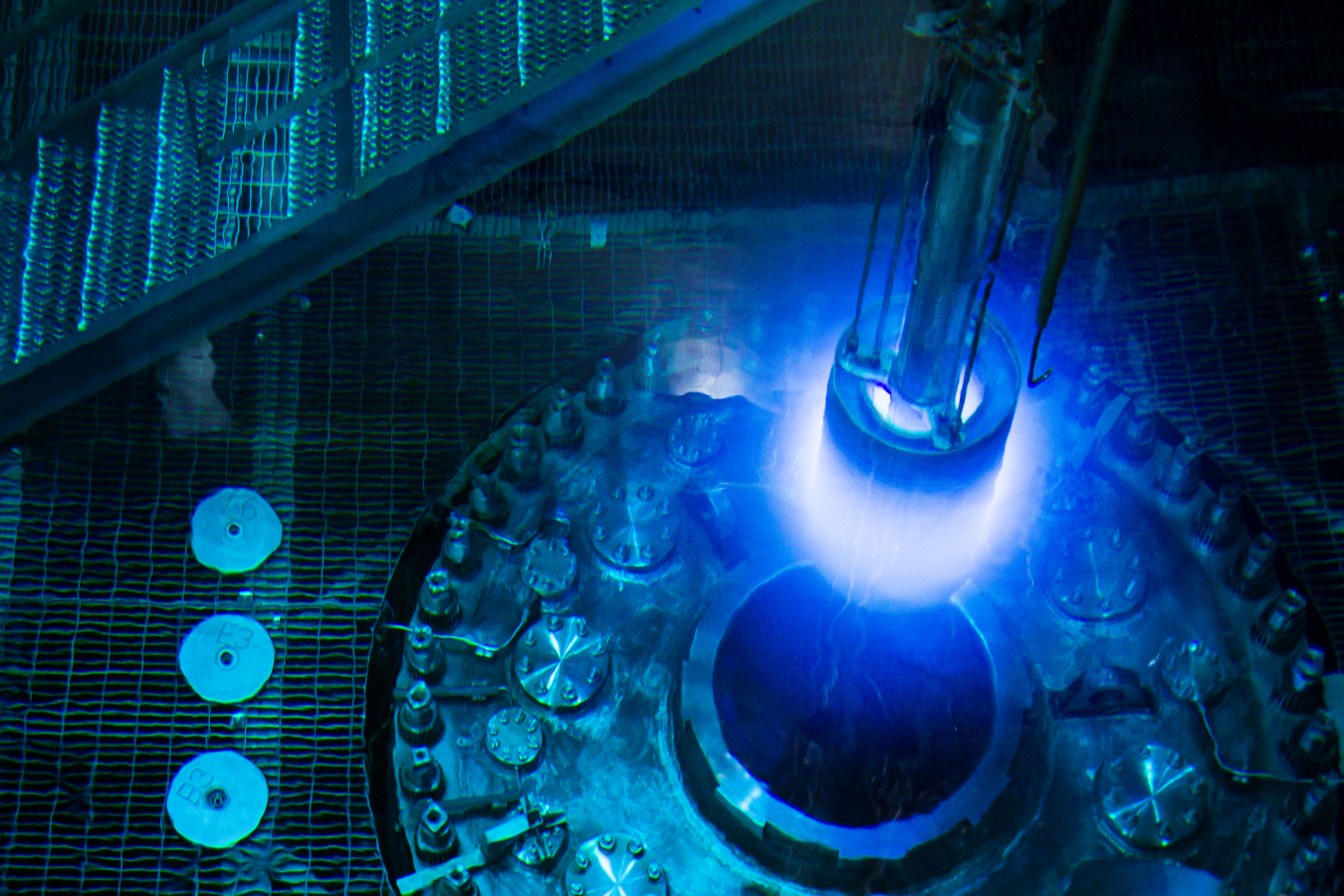7 fast facts on the High Flux Isotope Reactor—one of the nation's top facilities in producing medical- and industry-grade isotopes.
April 17, 2018The High Flux Isotope Reactor at Oak Ridge National Laboratory is kind of a big deal.
The research reactor, known as HFIR, is one the nation’s top facilities in producing medical- and industry-grade isotopes.
It’s also packed with power, providing a steady stream of neutrons that are used to study everything from the basic properties of matter to the cause of death of a U.S. president.
Got your attention?
Good.
Here are seven fast facts about HFIR.
1. HFIR’s reactor core is small but mighty.
HFIR produces one of the highest neutron fluxes in the world despite its core being roughly 2 feet tall and 15 inches in diameter. Its unique design consists of curved fuel plates and a centralized hole to trap the thermalized neutrons within the reactor, which is cooled by water at a flow rate of nearly 16,000 gallons per minute.
2. Research isn’t always done in the reactor.

Neutrons can be directed to one of four horizontal beam tubes for specialized experiments outside of the reactor. This allows researchers to carry out a range of imaging and neutron scattering experiments to study the structure and dynamics of materials.
3. HFIR can go hot or cold.
HFIR can produce thermal or cold neutrons to study everything from physics and chemistry to materials science and engineering. Cold-source capabilities were added in 2007 and increase the available neutron flux for scattering experiments. They can also be used to produce three-dimensional images of the material they interact with.
4. HFIR is a leading supplier of Californium-252.

HFIR is the western world’s sole supplier of Californium-252—an isotope used for well-logging and industrial scanning.
It was used to treat cancer and for detecting explosives but was later replaced by actinium-227 (cancer treatment) and nickel-63 (explosive detection)—both currently made at HFIR.
5. HFIR will help power future space missions.
HFIR is helping to beef up supplies of plutonium-238—an isotope used to power NASA space missions. The reactor, which irradiates neptunium oxide to create plutonium-238, successfully completed three production campaigns since 2015. They are also the first to be domestically produced in more than 25 years.
Oak Ridge and Idaho National Laboratory are currently working with NASA to produce around 1.5 kilograms of material per year for future missions.
6. HFIR determined President Zachary Taylor's cause of death.

The death of President Zachary Taylor in 1850 has long been debated over whether or not he was poisoned. Researchers were able to examine his hair and nail samples using HFIR and determined that the arsenic levels were much lower than what would be associated with poisoning.
7. HFIR helped discover a new element.
HFIR’s cold-source capabilities were used in discovering element 117 in 2010. The element, officially named tennessine seven years later by the International Union of Pure and Applied Chemistry, required berkelium-249, which was available only at HFIR.
HFIR is an Office of Science user facility for the U.S. Department of Energy.
Explore more fun facts about HFIR.

Sign up for the Office of Nuclear Energy newsletter.

